Hezbollah missiles

TOW ATGM, owned by Hezbollah and captured by the Israeli army in 2006. Photo by the Israeli Ministry of Defense
One of the main forces in the Middle East is the Lebanese Hezbollah movement. Its position and influence are largely determined by the presence of a large and well-equipped combat wing. The armed formations of the movement have a variety of weapons and equipment at their disposal, and missile systems of different classes and types play a special role. Some of these missiles are regularly used against the main enemy, Israel.
Sources of strength
The Hezbollah movement was founded in Lebanon in 1982 with the direct assistance of Iranian intelligence services. The movement declared its main task to be the political and social restructuring of its own country, as well as the fight against its opponents. The main enemies of the movement were Israel and its allies, primarily the United States.
Hezbollah differs from other similar movements in the Middle East in its larger numbers and corresponding potential. According to foreign estimates, in the organization, incl. its combat wing consists of several tens of thousands of people. The leadership of the movement in the recent past spoke of 100 thousand participants. Most of them are in the combat formations of the movement, which understandably affects its capabilities.
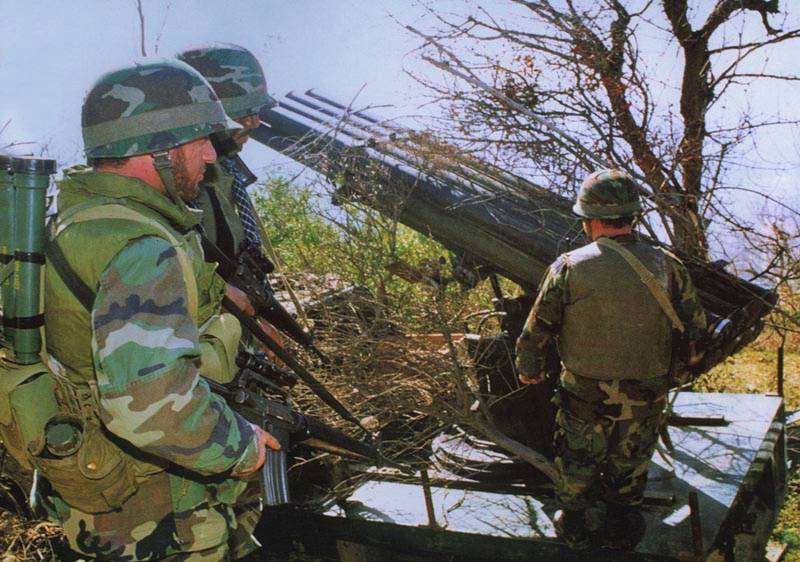
MLRS in position. Photo: Wikimedia Commons
In the construction and development of the combat organization, Hezbollah relies on its own forces, on friendly structures in its native Lebanon, as well as on foreign assistance. The main foreign supporter of the movement is Iran. Its intelligence services regularly transport various weapons and equipment to the movement’s formations. Syria provides similar assistance, but on a smaller scale.
Hezbollah's arsenals also contain Russian or American-made weapons. Direct deliveries of such products from manufacturing countries are, for obvious reasons, impossible. However, with foreign assistance, the movement receives the desired products and equipment. In addition, the militants treat captured trophies with care.
Infantry missiles
Taking into account the peculiarities of the development of the army of potential opponents, Hezbollah pays great attention to missile systems for infantry units. Thus, there is a wide range of anti-tank missile systems in service. There are products of different generations and models produced by different countries.
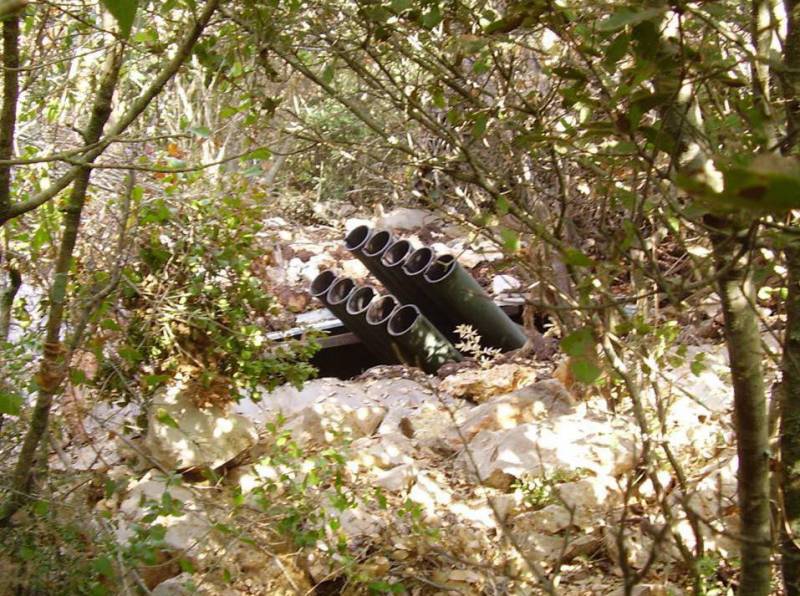
Disguised MLRS position. Photo by Israeli Ministry of Defense
In one way or another, Hezbollah units received a number of different anti-tank systems of Soviet and Russian design – from “Malyutka” to “Kornet”. European and American systems are available. Of particular interest is the simultaneous operation of the TOW ATGM from the USA and its Iranian copy "Tufan". The total number of all these weapons can reach several thousand units if there is a large supply of missiles.
Hezbollah also has some semblance of front-line air defense, the basis of which is portable air defense systems. There are products of the Strela and Igla families of Soviet production, captured American FIM-92, etc. In recent decades, the emergence of Iranian and Chinese-made MANPADS has been noted. There are rumors that the organization's combat wing also has more serious air defense systems, including medium-range systems. However, they do not receive confirmation.
Rocket artillery
Hezbollah's combat wing has a large and sophisticated rocket artillery force, which is the backbone of its military capabilities. It is armed with a variety of multiple launch rocket systems and tactical systems produced in a number of countries. With their help, it is possible to hit targets both at minimum distances and at ranges of 150-200 km.
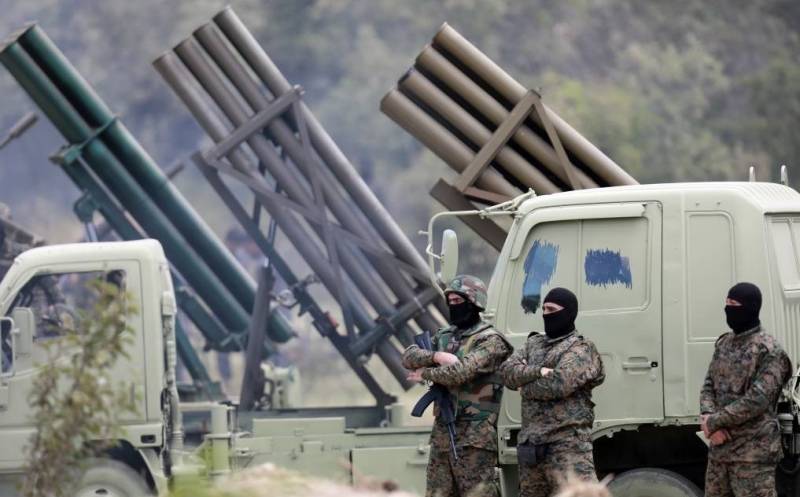
Modern MLRS combat vehicles. Photo: Tasnim News
The most widespread, according to known data, are 122-mm systems - Soviet BM-21 and their foreign or local copies. Combat vehicles of the original appearance, launchers on different chassis, “partisan” modification with one guide, etc. are used. Chinese 107-mm Type 63 systems and their various variants are also common. The number of such MLRS is unknown and, according to various estimates, can reach several hundred.
Larger caliber multiple launch rocket systems are available. Thus, in the past there were reports of the presence of Soviet Hurricanes, allegedly received from Syria. Iranian-made 240-mm Fajr-3 MLRS were also used in various operations.
To attack remote targets, there are full-fledged tactical missile systems with ballistic missiles, mostly unguided. Products “Falak”, “Shahin”, “Ogab”, etc. came from Iran and Syria. The most long-range and perfect weapons Hezbollah's rocket launchers are considered to be the Iranian Zelzal-2 and Fateh-110 missile launchers. They use heavy, large-caliber missiles and are capable of attacking targets at a distance of 200 km. The presence of controls increases the accuracy of the strike.
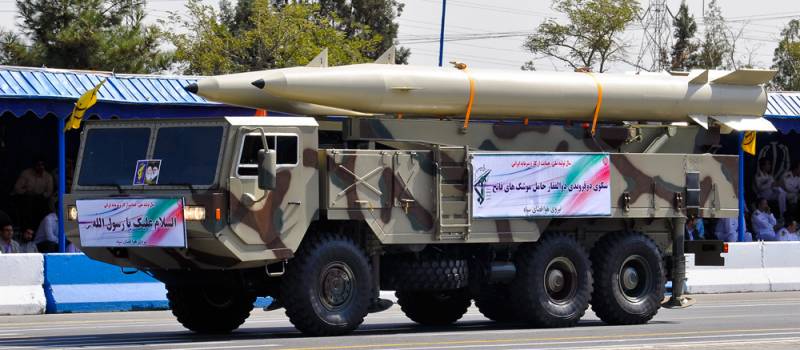
Iranian tactical missile system Fateh-110. Photo: Wikimedia Commons
Coastal defense
During the 2006 fighting, it was revealed that Hezbollah's combat wing even had guided anti-ship weapons. Using the existing coastal missile system, the militants attacked and hit an Israeli ship. Subsequently, it was reported that new ballistic missile systems with anti-ship missiles were put into service.
The attack on July 14, 2006 on the Hanit corvette was carried out using a Chinese C-802 missile or its Iranian copy. The launch was carried out from a mobile installation on a truck chassis. The search for a surface target and the issuance of data for firing were presumably carried out by combat coastal radars of the Lebanese Armed Forces. Reliable information on this matter was never received, but that same year Israel struck the radars.

Launch of the Fajr-5 missile by Iranian troops. Photo: Tasnim News
It is believed that Hezbollah is still armed with a missile launcher similar to the one used in 2006. The combat wing also has a stock of missiles made in China or Iran.
Since the mid-XNUMXs, rumors have been circulating in the foreign press about the possible appearance of Russian Yakhont anti-ship missiles by Hezbollah. Allegedly, Russia delivered a batch of such missiles to Syria, and it secretly transported a number of products to Lebanon. However, no evidence of such “re-export” or its technical details have yet appeared.
Almost an army
It is easy to see that the military wing of the Hezbollah movement is a kind of army with almost all the necessary branches of the military. With a total number of up to 100 thousand people, the organization has numerous infantry, incl. mechanized, equipped with small arms and other weapons, Tanks, cannon and rocket artillery, tactical missile systems and even coastal defense with the marine corps.
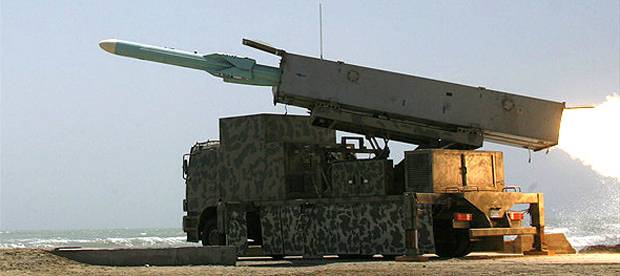
Chinese DBK with a C-802 missile. Photo missilery.info
Having such a composition and equipment, Hezbollah solves its military and political problems. The movement regularly carries out certain actions against Israel. The latest attacks using existing missile systems took place recently, and the situation in the region is conducive to continued escalation and new attacks.
With all this, Hezbollah’s military potential should not be overestimated, and this applies primarily to missile systems. Independently, at local production facilities, the movement can produce only the simplest types of weapons. Long-range shells for MLRS, tactical missiles or anti-ship weapons are exclusively of foreign origin.
Thus, Hezbollah has good missile capabilities, but is critically dependent on imports, mainly Iranian. If the channels for transporting finished weapons or their components are disrupted, the most serious problems and deterioration in the position of the combat wing and the movement as a whole are possible. However, Iran is taking all necessary measures, and in addition, it is ready to stand up for its partners in Lebanon politically or militarily.
Information